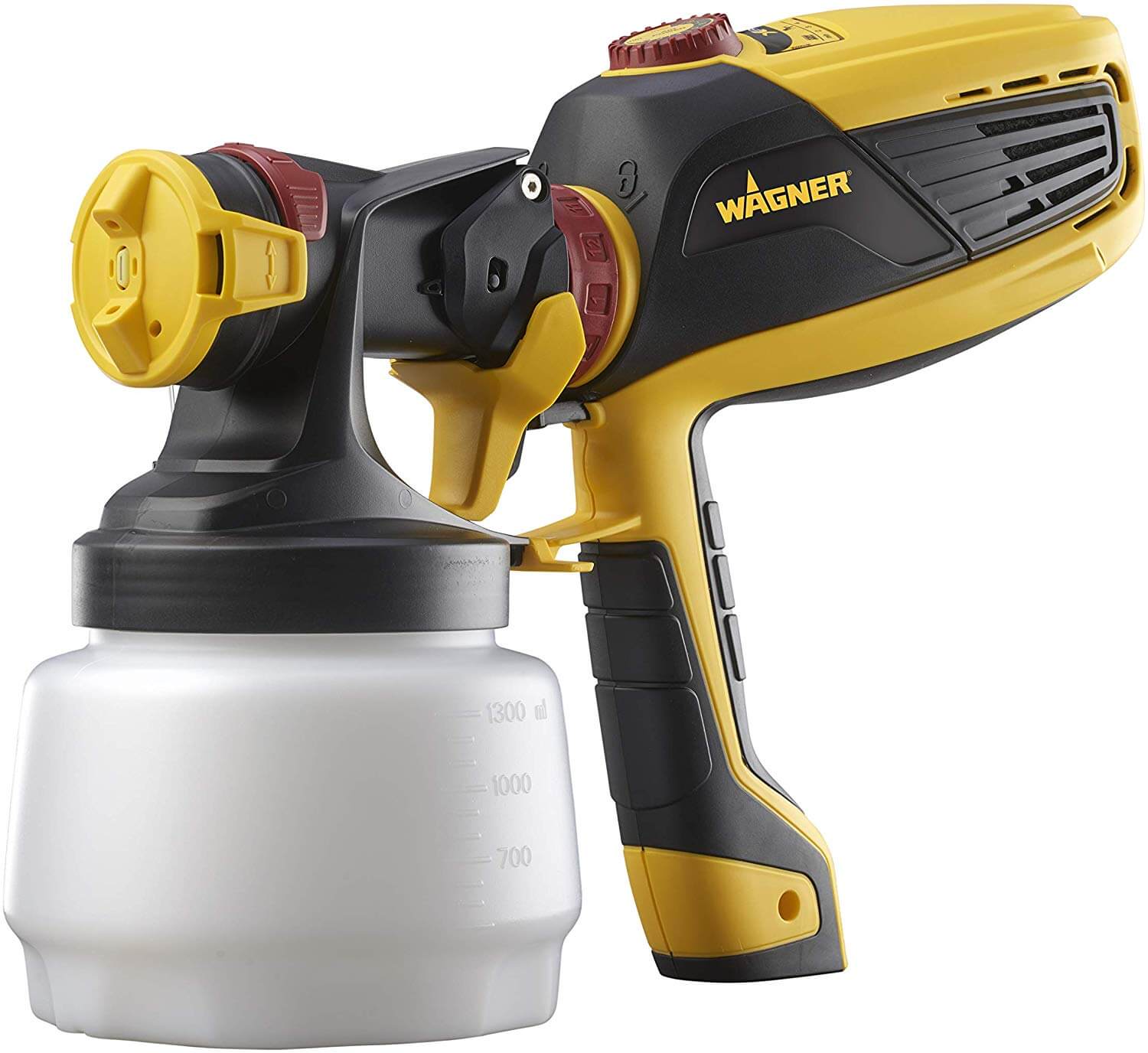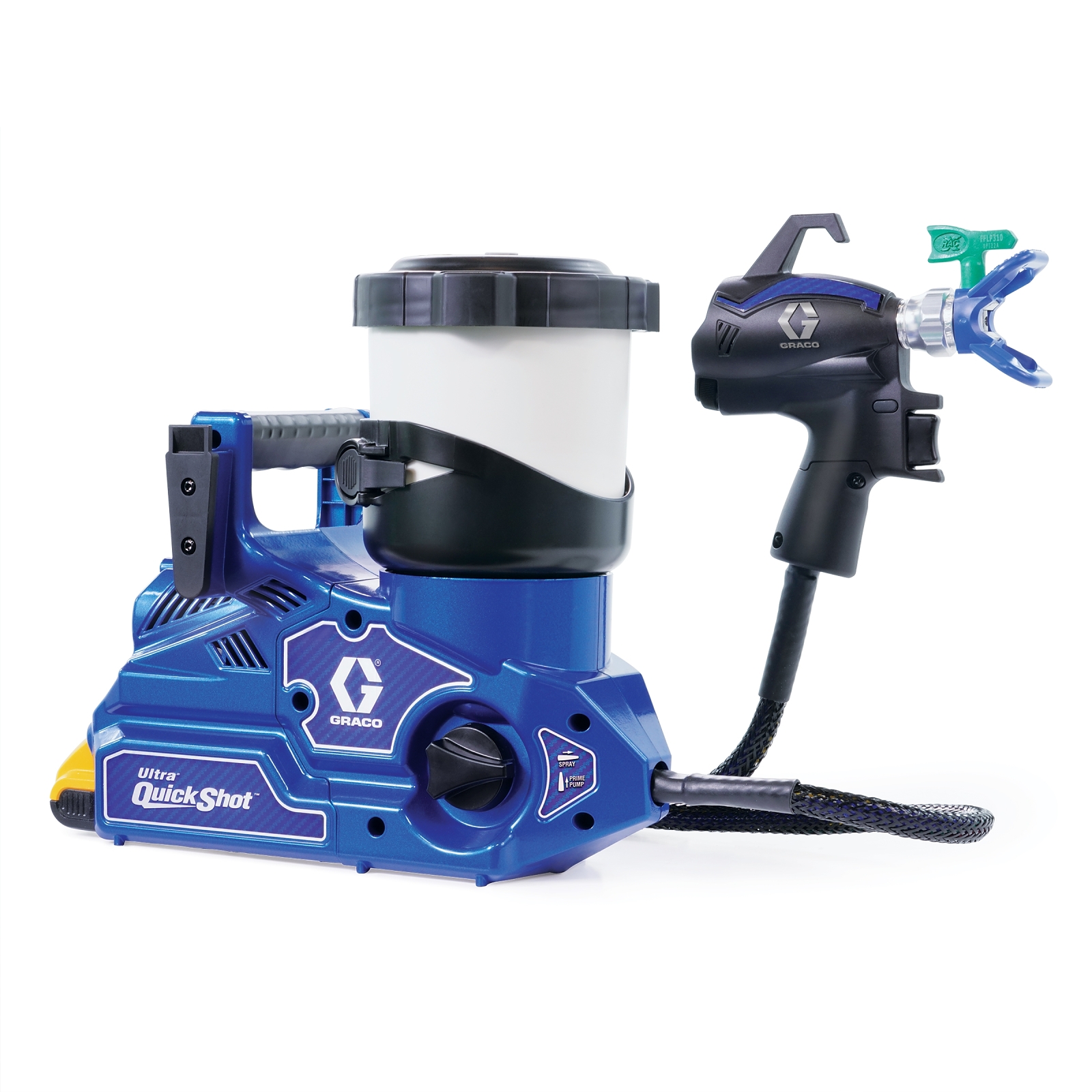Choosing the Right Airless Paint Sprayer for Cabinets

Transforming your cabinets with a fresh coat of paint can dramatically enhance the look and feel of your kitchen or bathroom. An airless paint sprayer offers a professional finish and significantly speeds up the process compared to traditional methods. But with a variety of models available, selecting the right airless paint sprayer for your cabinet project can be overwhelming. This guide will help you navigate the options and choose the ideal tool for your needs.
Advantages of Using an Airless Sprayer for Cabinets
Airless paint sprayers provide numerous advantages over traditional methods like brushes or rollers for painting cabinets:
- Faster Application: Airless sprayers apply paint much faster than brushes or rollers, reducing the time and effort required to complete the project.
- Even and Consistent Finish: Airless sprayers deliver a smooth, even coat of paint, eliminating brushstrokes and roller marks for a professional look.
- Less Overspray: Airless sprayers minimize overspray, reducing waste and cleanup time.
- Improved Coverage: Airless sprayers provide excellent coverage, ensuring all surfaces are coated evenly and efficiently.
- Suitable for Various Paint Types: Airless sprayers can handle a wide range of paint types, including latex, oil-based, and specialty finishes.
Types of Airless Sprayers
Airless paint sprayers come in two main types: electric and gas.
- Electric Airless Sprayers: Electric airless sprayers are powered by electricity and are generally quieter and more convenient for indoor use. They are ideal for smaller projects and offer portability. However, they may have lower power output compared to gas models.
- Gas Airless Sprayers: Gas airless sprayers are powered by a gas engine, providing greater power and capacity for larger projects. They are suitable for outdoor use and offer increased mobility, but they can be louder and require fuel.
Key Features to Consider
When selecting an airless paint sprayer for cabinets, consider the following key features:
- Spray Tip Size: The spray tip size determines the width of the paint stream. For cabinets, a tip size of 0.015 to 0.021 inches is typically recommended.
- Pressure Settings: The pressure settings control the paint flow rate and atomization. Higher pressure results in a finer spray pattern, while lower pressure provides thicker coverage. Adjust the pressure based on the paint type and desired finish.
- Tank Capacity: The tank capacity determines the amount of paint the sprayer can hold. For cabinet projects, a tank capacity of 1-2 gallons is generally sufficient.
Pros and Cons of Different Brands and Models
Choosing the right airless paint sprayer involves evaluating different brands and models. Some popular brands include Graco, Wagner, and Titan. Researching specific models and their features, along with customer reviews, can help you determine the best fit for your project. Consider factors like price, performance, durability, and ease of use.
Preparing Your Cabinets for Painting

A well-prepared surface is crucial for a professional-looking paint job. This section will guide you through the steps of prepping your cabinets for painting, ensuring a smooth and long-lasting finish.
Cleaning Your Cabinets, Best airless paint sprayer for cabinets
Cleaning your cabinets removes dirt, grease, and any existing coatings that could interfere with the adhesion of the primer and paint. Use a cleaning solution specifically designed for removing grease and grime. A combination of warm water and a mild dish soap can also be effective. Avoid harsh chemicals that can damage the wood.
- Start by removing all cabinet doors and drawers.
- Use a soft cloth or sponge to apply the cleaning solution to the cabinets, paying close attention to the areas that tend to accumulate grease and grime.
- Rinse thoroughly with clean water and dry the cabinets completely.
Sanding Your Cabinets
Sanding helps create a smooth surface for the paint to adhere to and provides a consistent texture for a uniform finish. For best results, use fine-grit sandpaper (120-180 grit) to smooth out any imperfections.
- Sand all surfaces of the cabinets, including the doors and drawers.
- Sand in the direction of the wood grain to avoid creating scratches.
- Focus on sanding areas with imperfections like dents, scratches, or uneven surfaces.
- After sanding, wipe away any dust with a tack cloth to ensure a clean surface.
Filling Imperfections
Filling imperfections like dents, scratches, or holes helps create a smooth and even surface for painting. Use wood filler that is compatible with the type of wood your cabinets are made from. Apply the filler with a putty knife and let it dry completely. Once dry, sand the filler smooth with fine-grit sandpaper.
Choosing the Right Paint and Primer
Choosing the right paint and primer is essential for achieving a durable and long-lasting finish. For cabinets, consider using a high-quality, oil-based primer that provides excellent adhesion and durability. For the top coat, choose a paint specifically designed for cabinets, such as a semi-gloss or satin finish. This type of paint is durable, easy to clean, and provides a beautiful sheen.
Masking Tape and Drop Cloths
Masking tape is essential for protecting areas around the cabinets from paint splatters. Use painter’s tape to mask off areas like trim, walls, and countertops. Drop cloths are used to protect floors and furniture from paint spills. Place the drop cloths underneath and around the cabinets.
Using Your Airless Paint Sprayer Effectively: Best Airless Paint Sprayer For Cabinets

Now that you have your airless paint sprayer and your cabinets are ready, it’s time to learn how to use your tool effectively. Proper technique is key to achieving a professional-looking finish.
Applying Paint with an Airless Sprayer
To achieve a smooth, even finish, follow these steps:
- Prepare your workspace. Protect surrounding areas with drop cloths and tape off areas you don’t want to paint. Ensure adequate ventilation and wear a respirator mask to protect yourself from paint fumes.
- Practice on a scrap piece of wood. This will help you get a feel for the sprayer and adjust the settings before you start painting your cabinets. Experiment with the spray pattern, distance, and paint consistency.
- Start with a light, even coat. Hold the sprayer approximately 12 inches from the surface and move it slowly and evenly, keeping the gun perpendicular to the surface. Overlapping each stroke by about 50% will ensure an even coat.
- Apply multiple thin coats. It’s better to apply multiple thin coats than one thick coat. This will help prevent runs and sags and ensure a smooth finish. Allow each coat to dry completely before applying the next.
- Clean up. After you’ve finished painting, clean the sprayer thoroughly. Follow the manufacturer’s instructions for cleaning.
Controlling the Spray Pattern
The spray pattern of an airless sprayer can be adjusted to suit the surface you are painting.
- Adjusting the fan width. The fan width can be adjusted by turning a knob or lever on the sprayer. A wider fan width is ideal for large surfaces, while a narrower fan width is better for detailed work.
- Controlling the spray pressure. The spray pressure can also be adjusted. Higher pressure results in a thicker coat, while lower pressure produces a thinner coat.
Avoiding Drips and Runs
Drips and runs are common problems when using an airless sprayer.
- Use the correct paint consistency. Too thick of paint will cause drips and runs. Thin the paint according to the manufacturer’s instructions.
- Avoid spraying too close to the surface. Holding the sprayer too close to the surface can cause the paint to build up and drip.
- Move the sprayer slowly and evenly. Don’t stop in one spot for too long.
Troubleshooting Common Problems
Sometimes, problems arise during the painting process.
- Clogged nozzle. If the nozzle is clogged, the paint will not spray evenly. Clean the nozzle with a wire brush or a small screwdriver.
- Low paint pressure. If the paint pressure is too low, the paint will not spray properly. Check the pump and make sure it is working correctly.
- Uneven spray pattern. If the spray pattern is uneven, check the nozzle and the tip. Make sure they are clean and aligned correctly.
The best airless paint sprayer for cabinets will depend on the size of the project and the desired finish. For larger projects, a high-volume, low-pressure (HVLP) sprayer can be a good choice, while a smaller, handheld sprayer might be more suitable for smaller projects.
When choosing a sprayer for cabinets, it’s important to consider the type of paint being used, as some sprayers are better suited for certain types of paint. For instance, when painting a flat screen cabinet with doors, such as those found in this design guide , a sprayer that can handle both latex and oil-based paints would be ideal.
Ultimately, the best airless paint sprayer for cabinets will be the one that provides the most efficient and high-quality finish.
The best airless paint sprayer for cabinets will depend on the size and complexity of the project, as well as the desired finish. For a professional-grade finish, consider a sprayer with adjustable pressure and a wide range of spray patterns.
When selecting cabinet hardware, copper cabinet door hinges can add a touch of elegance and durability, complementing the freshly painted cabinets. Ultimately, the ideal airless paint sprayer should be easy to use and maintain, providing consistent results for a beautiful, long-lasting finish.
